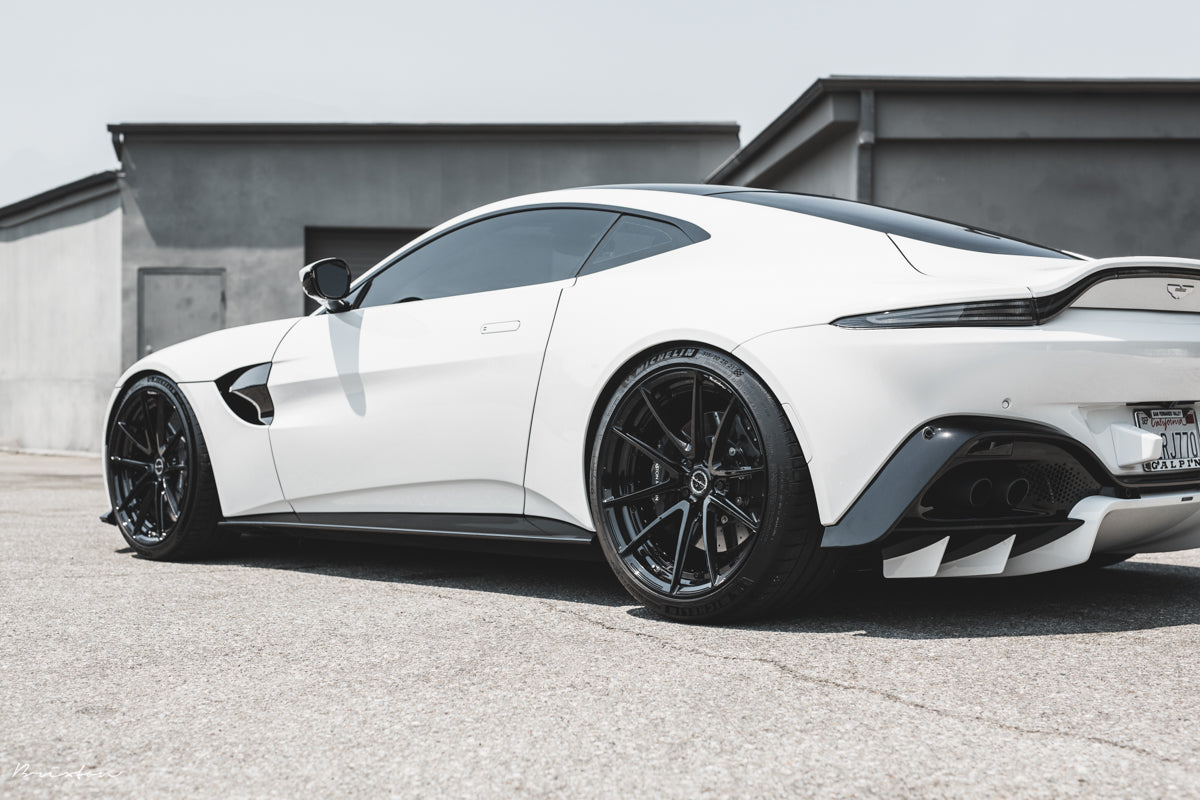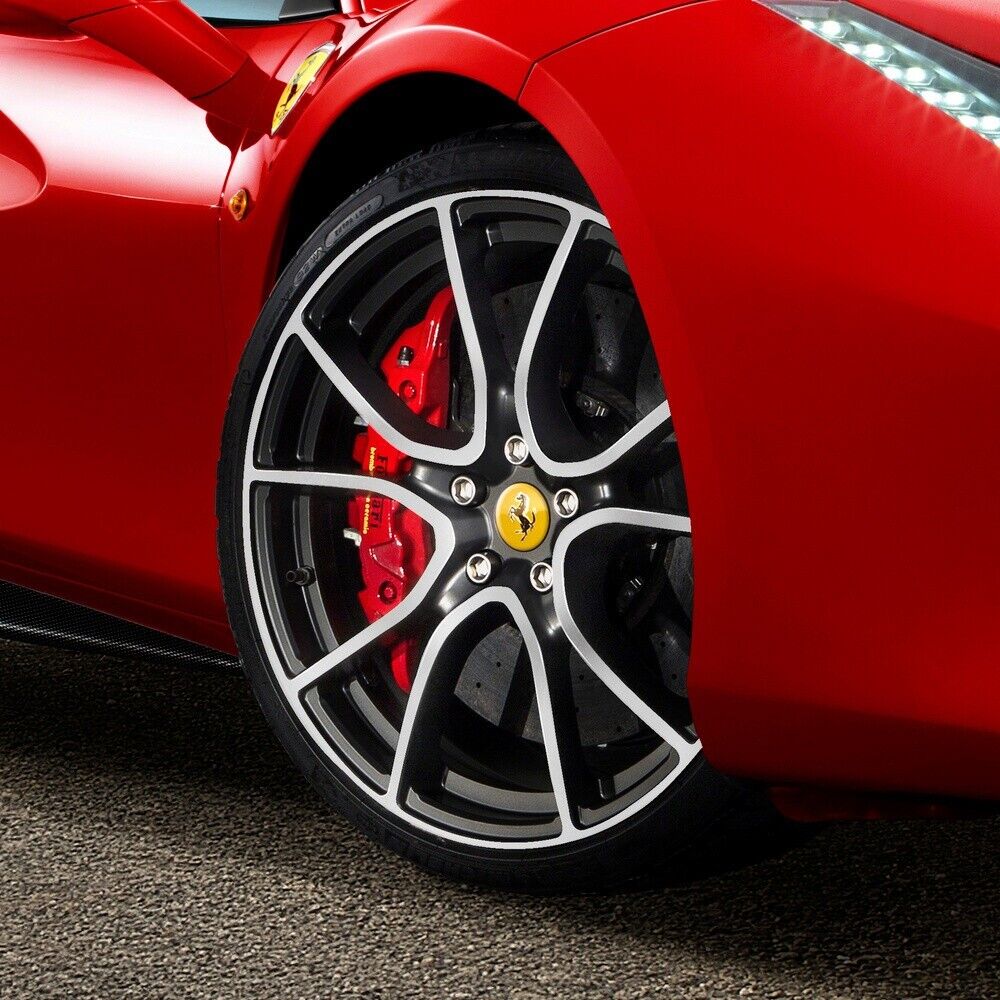
Wheel Spacer Size & Fitment Guide [PCD Definition, Offset, Thickness Explained]
Share
Wheel Spacer Size & Fitment Guide [PCD, Offset, Thickness Explained]
Fitment is the number one thing people get wrong with spacers on wheels. Walk through any car meet and you'll spot vibrating wheels, incorrect bolt patterns, and dangerous installations that could have been avoided with five minutes of research.
The good news? Once you understand PCD, centre bore, and spacer thickness, choosing the right spacers for wheels becomes straightforward. No guesswork, no expensive mistakes, just proper engineering.
This wheel spacer fitment guide will teach you everything needed to select, buy, and install spacers safely. By the end, you'll know exactly what your car needs.
What is the meaning of PCD (Pitch Circle Diameter)
Let's start with the definition of PCD: PCD stands for Pitch Circle Diameter - the measurement that defines your wheel's bolt pattern. It consists of two numbers: the quantity of bolts and the diameter of the circle they sit on.
Common examples include BMW using 5×120 (five bolts on a 120mm circle), while Audi and VW typically use 5×112. Porsche runs 5×130 on most models. Getting this wrong means your spacers won't bolt up at all.
Measuring PCD is simple with the right technique. For five-bolt wheels, measure from the center of one bolt hole to the center of the bolt hole two positions away, then multiply by 0.85. For four-bolt patterns, measure diagonally across opposite bolt holes.
You can also find PCD specifications in your owner's manual, on wheel manufacturer websites, or by checking the back of your existing wheels where it's often stamped.
Centre Bore (CB) and Hubcentric Fitment

The centre bore must match your car's hub diameter exactly. This isn't a "close enough" measurement - precision matters for safety and performance.
BMW typically uses 72.6mm centre bores, while Audi models commonly have 66.6mm. Mercedes varies between 66.6mm and 66.1mm depending on the model. Even 0.1mm difference can cause problems.
Wrong centre bore sizing creates wheel wobble and unsafe fitment. The wheel won't sit concentrically on the hub, leading to vibration that gets worse with speed. In extreme cases, this can cause premature bearing wear or wheel separation.
Hubcentric design matters because it maintains the original load distribution your car manufacturer engineered. The hub carries the vehicle's weight, while bolts provide clamping force. This is how your car works from the factory.
Spacer Thickness: Choosing the Right Size

Spacer thickness determines how far your wheels move outward. Different thicknesses serve different purposes, and choosing correctly affects both appearance and function.
Thin spacers between 5-10mm provide subtle stance improvements and minor brake clearance gains. These work well for cars that just need wheels to sit slightly more flush with the arches.
Medium thickness spacers from 12-20mm are most common for combining improved handling with better looks. This range typically provides the best balance of performance and aesthetics for street cars.
Thick spacers of 25mm and above create aggressive stances and can work as PCD adapters when combined with different bolt patterns. However, they require careful consideration of clearances and may affect handling characteristics.
The rule of thumb: offset change equals spacer thickness. If you want your wheels 15mm further out, you need 15mm spacers. This helps visualize the final result before purchasing.
Offset Correction Explained
Wheel offset (marked as ET numbers) describes how far the wheel's mounting surface sits from its centerline. Positive offset means the mounting surface is toward the outside face of the wheel.
Spacers reduce positive offset by moving wheels outward. For example, an ET45 wheel with 15mm spacers creates a final offset of ET30. This calculation helps predict final fitment.
This matters for several reasons. Stance improves as wheels sit closer to the arch edges. Brake clearance increases as wheels move away from suspension components. However, excessive offset changes can cause tire rub on suspension or body panels.
Understanding your car's original offset helps determine appropriate spacer thickness. Most cars benefit from 10-20mm offset reduction, but individual requirements vary based on wheel design and body clearances.
Bolt Length and Hardware Matching

Extended bolt length must equal your original bolt length plus spacer thickness. This isn't negotiable - insufficient thread engagement creates dangerous conditions that can lead to wheel separation.
Seat type matters just as much as length. Cone-seat bolts (also called tapered) are most common on European cars, while ball-seat bolts appear on some models. Using the wrong type prevents proper clamping and can damage wheels.
Torque specifications remain critical regardless of spacer thickness. Most cars require between 80-120 Nm, but always check your owner's manual. Under-torquing allows loosening, while over-torquing can strip threads or stretch bolts.
Quality hardware isn't optional. Cheap bolts can fail catastrophically, especially under the increased loads that spacers can create. Always use grade 10.9 or 12.9 bolts from reputable manufacturers.
Real-World Examples

BMW 3 Series typically uses 5×120 PCD with 72.6mm centre bore. Popular spacer sizes are 12-15mm for improved stance without affecting handling dramatically. This moves ET47 wheels to ET32-35, creating a more aggressive look.
Audi A4 models commonly have 5×112 wheel spacers with 66.6mm centre bore. Most owners choose 10-15mm thickness for better wheel-to-arch proportion. The change from ET43 to ET28-33 improves both looks and handling.
Porsche 911 uses 5×130 PCD with 71.6mm centre bore across most generations. Owners often run 15-20mm spacers to achieve the wide-body look. This transforms ET52 wheels to ET32-37, creating the distinctive Porsche stance.
These examples show how the same thickness affects different cars differently. Always measure your specific vehicle rather than copying someone else's setup.
Finding the right Wheel PCD
The wheel PCD needs to match the hub PCD for wheel spacers to fit. If it doesn't, you can buy hub adapters which convert one PCD to another (such as a 5 x100 adapter to 5x112). If you are looking for the simple option though, just ensure that the wheel PCD of the wheel you are buying matches that of your car. You can find your cars hub PCD on a site like Wheel Sizes.
Mistakes to Avoid When Choosing Spacers
Buying by brand name alone instead of checking fitment specifications leads to expensive returns and delays. Every car needs specific PCD, centre bore, and thickness combinations - no exceptions.
Guessing thickness instead of measuring arch clearance often results in wheels that stick out too far or don't achieve the desired look. Use proper measuring tools and allow for suspension compression.
Universal or non-hubcentric spacers might seem cheaper, but they compromise safety and create vibration problems. The small cost saving isn't worth the risks involved.
Not checking bolt engagement after installation has caused wheel separations. Always verify that bolts engage at least 1.5 times their diameter in thread length. This usually means 15-20mm minimum engagement for M12 or M14 bolts.
Free Tools to Find Your Fitment
Our number plate lookup tool (coming soon) will instantly show correct PCD, centre bore, and suggested spacer thickness for your specific vehicle. This eliminates guesswork and prevents ordering mistakes.
Wheel-Size.com provides the most complete database of wheel fitment specifications available online. Their search function covers virtually every car make and model with accurate PCD and centre bore data.
We're also developing a downloadable PDF fitment checklist that walks through every measurement and specification needed. This ensures you gather all required information before placing an order.
These tools eliminate the confusion that causes most fitment problems. Accurate information leads to correct purchases and safe installations.
Professional Installation Recommendations

While spacer installation appears straightforward, several factors benefit from professional attention. Proper torque application requires calibrated tools that many home mechanics don't own.
Suspension geometry changes slightly with spacers, and experienced technicians can identify potential issues before they cause problems. This includes checking for brake line interference and suspension component clearance.
Professional installation also provides documentation for insurance purposes. Many companies appreciate evidence that modifications were completed by qualified technicians using proper procedures.
However, competent DIY installation is certainly possible with the right tools and knowledge. Focus on cleanliness, proper torque, and thorough post-installation checks.
Conclusion
Correct spacer sizing comes down to four critical measurements: PCD, centre bore, thickness, and bolt specifications. Get these right and you'll have years of safe, reliable service with improved looks and handling.
Remember that quality matters as much as fitment. Precision manufacturing, proper materials, and complete hardware packages separate professional-grade spacers from cheap alternatives that create safety risks.
Ready to transform your car's stance safely? Browse Brightstone Engineering's precision hubcentric wheel spacers, CNC-machined in the UK to exact fitment specifications. Every set includes correct extended bolts and detailed installation instructions for professional results.
FAQ:
Definition of PCD:
PCD stands for Pitch Circle Diameter. PCD is the technical term for the bolt patter for wheels. It is the distance of the centre of the bolt hole from the centre of the hub.
Is Wheel Bolt Pattern the same as Bolt Pattern for Wheels
Yes, there are many terms that mean the same thing. Wheel Bolt Pattern is the same as Bolt Pattern for Wheels, or PCD, or Bolt Pattern for Rims. All of these terms mean the same thing: How many bolts do I need, and what is their distance from the centre of the hub.
How do I take a PCD Measurement:
PCD measurements are taken by measuring the distance from the centre of the bolt hole in the rim, to the centre of the hub. The PCD measurement is the diameter of the circle through which the bolt holes sit.
Common Car PCDs:
These are some of the more common car PCDs. Remember to always check for your particular make and model though.
- BMW PCD: 5x120 (or 5x112 for later smaller cars)
- VW PCD: 5x100
- Audi PCD: 5x112
- Mercedes PCD: 5x112






